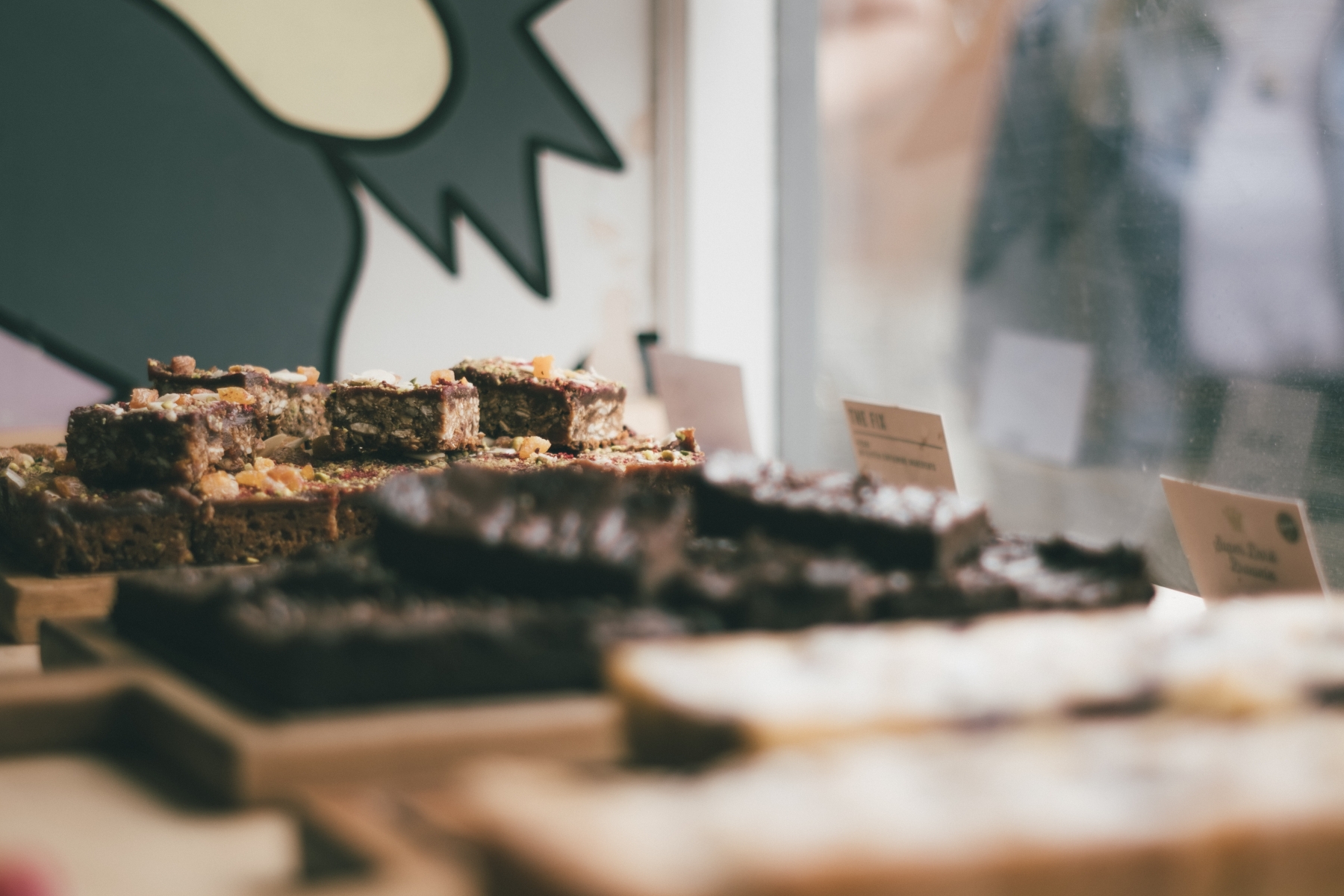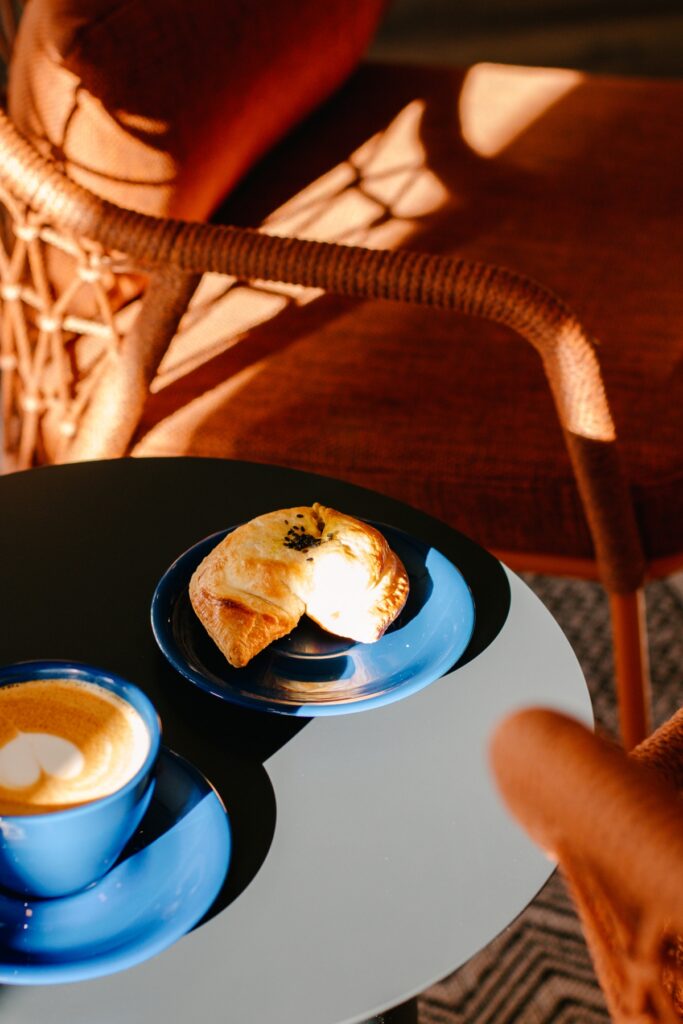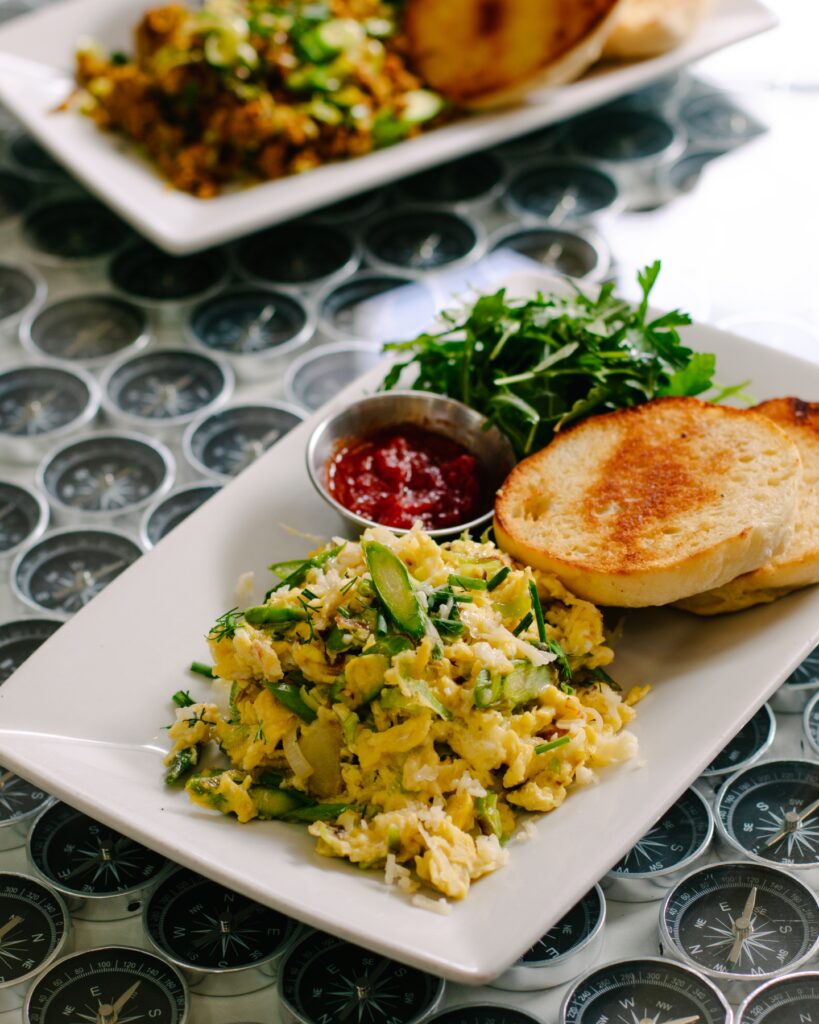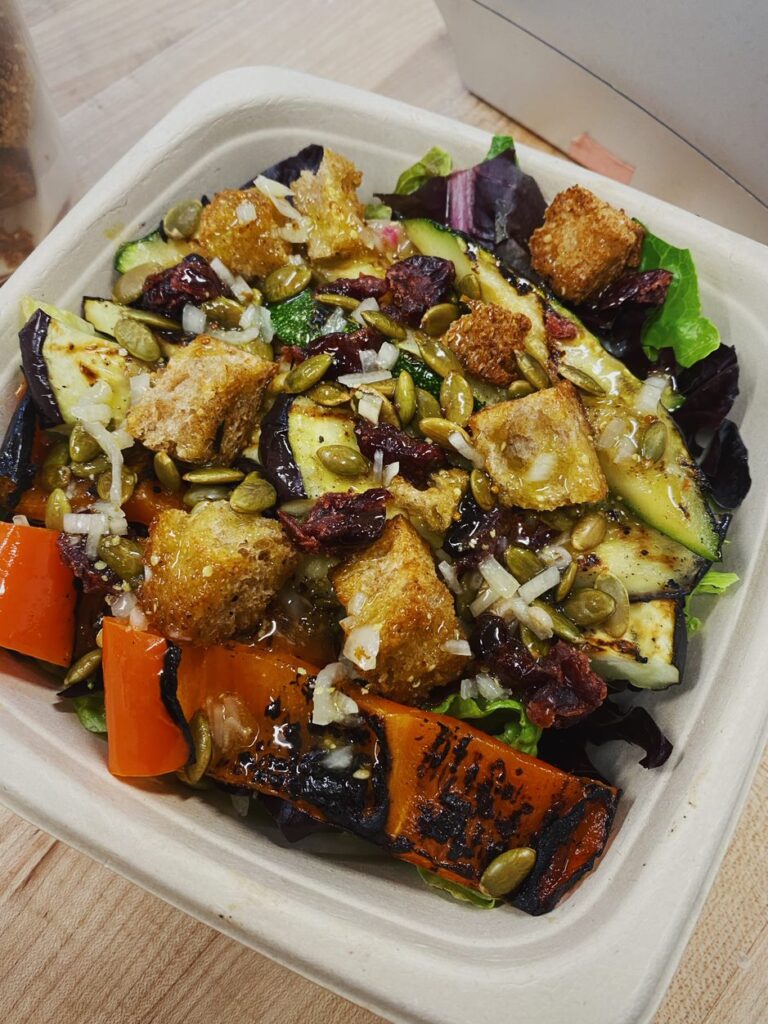Let’s be honest: we love coffee, but when it’s paired with great food, there’s no contest. A café where we can not only caffeinate in style but also find a tasty, satisfying meal—especially one we can take with us or even eat on the go—is the unicorn we’re all searching for.
Luckily, many have found the recipe for success: great cafés that also serve great food, fast. We interviewed coffee and food pros from three companies with convenient and satisfying food options on how they make it happen and keep customers coming back for more.
We discussed the importance of grab-and-go options, whether to prepare in-house or outsource, costing, measuring success and more.
Why Grab-and-Go?
What makes a grab-and-go option important? Why should you have one?
Erica Escalante works for LA-based specialty coffee roaster Goodboybob, whose three cafés offer a full suite of coffee drinks, wine and beer options, and chef-driven food and bakery programs.
Escalante says goodboybob sought to balance excellence and appeal with the needs of their regulars, many of whom are office workers who lack convenient options. “Our grab-and-go priority was to create something convenient for customers on the go but kept our high standards of excellence,” she says. “How do we give the goodboybob experience to customers on the go? Our customer base here in Southern California values fresh, nutritious, tasty, and seasonal food, and with that direction, our chefs have developed some beautiful options.”
Jay Weatherly owns High Five Coffee in Asheville, NC. The store’s three locations all serve ready-to-go food options because it allows customers to see the food versus looking at a menu and ordering, stimulating sales and increasing satisfaction. “If a product is in sight/touch, customers have more ease and freedom to choose what they want,” he says. “This is also why we keep our selection fairly minimal and don’t overload customers with too many options, only stocking the ones customers keep coming back for.”
Mars Maynard directs operations at Ada’s Technical Books & Café and Fuel Coffee in Seattle, spaces focused on building community through science-minded literature, vegetarian food, great coffee, coworking, and communal events. Why is a grab-and-go important to them? Customer expectations.
“Honestly, it’s simply expected by guests now,” says Maynard. “When COVID hit, many stores quit having in-store seating, but they still wanted food options for people to take away.” Even after states reopened indoor dining, Maynard says that many customers still want and expect takeout they can grab themselves. Beyond that, “it also has the potential for semi-labor free revenue if you aren’t making all items in-house. You can add dollars to your bottom line while fulfilling guests’ needs and expectations.”
Ada’s and Fuel make many items in-house but also add outsourced items from like-minded purveyors with aligned goals.
In-House, Outsourced, or Both
Fast to-go options are vital for busy customers on the move, and there are many ways to make it happen. Whether you already have an in-house food program and want to expand into grab-and-go or have little to no kitchen space to make food in-house, you can still construct the grab-and-go menu of your dreams.
At goodboybob, a solid in-house food program has been core since the beginning, but the team is now adding a grab-and-go to meet busy clientele’s needs. “The grab-and-go program will include seasonal salads, sandwiches, soups, and even smaller snack items like Polish mother’s potato salad and matcha and chia seed yogurt cups to give a nice range for any level of hunger, “says Escalante. “We’re also offering various bottled beverages and chilled bottles of wine.”
When planning a grab-and-go, she recommends considering the standards you put in place with your coffee program and bringing that same level to your food. “Every item your customer buys leaves them with an impression of your company—serve them well!”
At Ada’s, the grab-and-go food menu boasts a combination of house-made and thoughtfully outsourced items, including house-made empanadas and a selection of salads and snacks. “Our café menu is also designed to be easily made to go so anyone can pop in for a quick lunch or take the food to the park if they choose,” says Maynard. “Then we partner with Sea Wolf Bakery and Cookies with Tiffany to provide delicious pastry options. At Fuel, we have some additional grab-and-go items from Gourmondo, a local catering company, as well as our selections from Sea Wolf, Tiffany, and some donuts from Alki Bakery.”
Where googboybob makes almost everything in-house, and Ada’s and Fuel serve up a mix of in-house and thoughtfully outsourced goods, High Five’s grab-and-go options focus exclusively on careful partnership with other local businesses. “We feature pre-made baked goods, bagels, biscuits, and sandwiches from a couple of local bakeries and dessert makers,” says Weatherly. “Most of our selection is easy to grab and go or put in the toaster oven and enjoy in-house.”
Because they have little extra space and a tight focus on coffee, the High Five team has stuck with outsourcing regarding grab-and-go options. “We’ve stayed away from more in-house food preparations so we could continue to focus on the craft of coffee and espresso drinks but still have enjoyable breakfast and lunch options,” he says. “We’re a simple-style café, with no kitchen space and only a prep cooler to prepare food, so this lets us have some hearty options without the full involvement of a kitchen staff. It lets us keep our staff’s focus on coffee in all its forms.”
Pro Tips: Costing & Logistics
It may seem obvious, but one important thing to note when launching, maintaining, or retooling your food program for grab-and-go options is costs and logistical details, including packaging and storage space.
“Cost all your items down to the gram before you put anything on your menu; you need to know how much everything will cost you on the production side and if you can afford to carry it at a price customers can pay,” says Maynard. He advises those who want to make items in-house to ensure they have space to store raw goods and find a consistent way to source packaging.
For outsourcing, he recommends that you’re sure you and your partners can meet each other’s needs consistently. “If you’re going to bring in food from an outside provider, make sure you can meet minimums for your orders and that you have a good system to reduce waste. If you find a purveyor you like, try going to one of the other stores they service and try their items a few days in a row to get a sense of their consistency.”
Escalante agrees. “It’s very, very important to fully understand your costs in a food program and price accordingly. COGS (costs of goods and services) can easily get away from you,” she says. And, she adds, “don’t forget about packaging costs.”
Change it Up
Is your grab-and-go menu working for you? Are customers responding positively? If you’re implementing new menu offerings, it’s essential to measure success—don’t be afraid to make changes as you go.
“Think about your success metrics—how will you know when something is worth keeping or when it’s time to move on?” asks Escalante. “You might launch something, and it won’t take off for a few weeks. Make a plan with your team to decide when it’s time to switch it up. Get your whole team on board with spreading the word and reaching goals. Train your baristas to suggest new options at the register.”
“Be willing to change if things aren’t selling,” agrees Maynard. “Ask your customers what they want, and try to get their feedback whenever you put out a new item.”
Maynard is glad to see that most cafés and even bookstores are now carrying food beyond just pastries (albeit, to varying degrees of success). “It’s a challenge with how the pandemic hit the supply chain and how food costs are rising dramatically, but with careful planning and a passion for good food, I think most places can use food to add to their bottom line,” he says.
Adding delicious and convenient food options to your menu presents challenges. Still, it can also be a great source of extra revenue—not to mention another excellent reason for your customers to visit.
Cover photo by Dan Burton
RJ Joseph is a coffee writer focusing primarily on equity, workers’ rights, and structural alternatives to the status quo. She’s been a barista, a roaster, a green coffee grader and lab tech, and finally made coffee writing her full-time gig at Red Fox Coffee Merchants. In her decade in coffee, she’s also run a queer coffee events organization, written a blog on equity in coffee, and run a coffee satire website called The Knockbox. If you see her around, say hi.



















